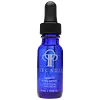What's inside
What's inside
 Key Ingredients
Key Ingredients

 Benefits
Benefits

 Concerns
Concerns

 Ingredients Side-by-side
Ingredients Side-by-side

Water
Skin ConditioningGlycerin
HumectantHelianthus Annuus Seed Oil
EmollientPEG-40 Hydrogenated Castor Oil
EmulsifyingCyclopentasiloxane
EmollientButylene Glycol
HumectantCetearyl Alcohol
EmollientLimnanthes Alba Seed Oil
Skin ConditioningMangifera Indica Seed Butter
Skin ConditioningDimethicone
EmollientGlyceryl Stearate
EmollientCeteareth-20
CleansingButyrospermum Parkii Butter
Skin ConditioningMethylsilanol Mannuronate
Skin ConditioningCycloastragenol
Ceramide 2
Skin ConditioningMyristoyl Tetrapeptide-12
Skin ConditioningMyristoyl Pentapeptide-11
Skin ConditioningPalmitoyl Pentapeptide-4
Skin ConditioningMyristoyl Pentapeptide-8
Skin ConditioningSh-Polypeptide-3
Skin ConditioningSh-Polypeptide-22
Skin ConditioningSh-Oligopeptide-1
Skin ConditioningPanthenol
Skin ConditioningSodium Hyaluronate
HumectantLinoleic Acid
CleansingLinolenic Acid
CleansingCamellia Oleifera Leaf Extract
AstringentAllantoin
Skin ConditioningUbiquinone
AntioxidantTocopheryl Acetate
AntioxidantTocopherol
AntioxidantMagnesium Aluminum Silicate
AbsorbentDimethicone/Vinyl Dimethicone Crosspolymer
Skin ConditioningXanthan Gum
EmulsifyingGlycine Soja Oil
EmollientHydrogenated Lecithin
EmulsifyingCarbomer
Emulsion StabilisingPolysorbate 20
EmulsifyingYeast Polysaccharides
Skin ConditioningSodium Lactate
BufferingCaprylyl Glycol
EmollientEthylhexylglycerin
Skin ConditioningHexylene Glycol
EmulsifyingCitric Acid
BufferingQuartz
AbrasiveSodium Oleate
CleansingDisodium EDTA
Sorbic Acid
PreservativePhenoxyethanol
PreservativeWater, Glycerin, Helianthus Annuus Seed Oil, PEG-40 Hydrogenated Castor Oil, Cyclopentasiloxane, Butylene Glycol, Cetearyl Alcohol, Limnanthes Alba Seed Oil, Mangifera Indica Seed Butter, Dimethicone, Glyceryl Stearate, Ceteareth-20, Butyrospermum Parkii Butter, Methylsilanol Mannuronate, Cycloastragenol, Ceramide 2, Myristoyl Tetrapeptide-12, Myristoyl Pentapeptide-11, Palmitoyl Pentapeptide-4, Myristoyl Pentapeptide-8, Sh-Polypeptide-3, Sh-Polypeptide-22, Sh-Oligopeptide-1, Panthenol, Sodium Hyaluronate, Linoleic Acid, Linolenic Acid, Camellia Oleifera Leaf Extract, Allantoin, Ubiquinone, Tocopheryl Acetate, Tocopherol, Magnesium Aluminum Silicate, Dimethicone/Vinyl Dimethicone Crosspolymer, Xanthan Gum, Glycine Soja Oil, Hydrogenated Lecithin, Carbomer, Polysorbate 20, Yeast Polysaccharides, Sodium Lactate, Caprylyl Glycol, Ethylhexylglycerin, Hexylene Glycol, Citric Acid, Quartz, Sodium Oleate, Disodium EDTA, Sorbic Acid, Phenoxyethanol
 Reviews
Reviews

Ingredients Explained
These ingredients are found in both products.
Ingredients higher up in an ingredient list are typically present in a larger amount.
Butylene Glycol (or BG) is used within cosmetic products for a few different reasons:
Overall, Butylene Glycol is a safe and well-rounded ingredient that works well with other ingredients.
Though this ingredient works well with most skin types, some people with sensitive skin may experience a reaction such as allergic rashes, closed comedones, or itchiness.
Learn more about Butylene GlycolGlycerin is already naturally found in your skin. It helps moisturize and protect your skin.
A study from 2016 found glycerin to be more effective as a humectant than AHAs and hyaluronic acid.
As a humectant, it helps the skin stay hydrated by pulling moisture to your skin. The low molecular weight of glycerin allows it to pull moisture into the deeper layers of your skin.
Hydrated skin improves your skin barrier; Your skin barrier helps protect against irritants and bacteria.
Glycerin has also been found to have antimicrobial and antiviral properties. Due to these properties, glycerin is often used in wound and burn treatments.
In cosmetics, glycerin is usually derived from plants such as soybean or palm. However, it can also be sourced from animals, such as tallow or animal fat.
This ingredient is organic, colorless, odorless, and non-toxic.
Glycerin is the name for this ingredient in American English. British English uses Glycerol/Glycerine.
Learn more about GlycerinPhenoxyethanol is a preservative that has germicide, antimicrobial, and aromatic properties. Studies show that phenoxyethanol can prevent microbial growth. By itself, it has a scent that is similar to that of a rose.
It's often used in formulations along with Caprylyl Glycol to preserve the shelf life of products.
Water. It's the most common cosmetic ingredient of all. You'll usually see it at the top of ingredient lists, meaning that it makes up the largest part of the product.
So why is it so popular? Water most often acts as a solvent - this means that it helps dissolve other ingredients into the formulation.
You'll also recognize water as that liquid we all need to stay alive. If you see this, drink a glass of water. Stay hydrated!
Learn more about Water